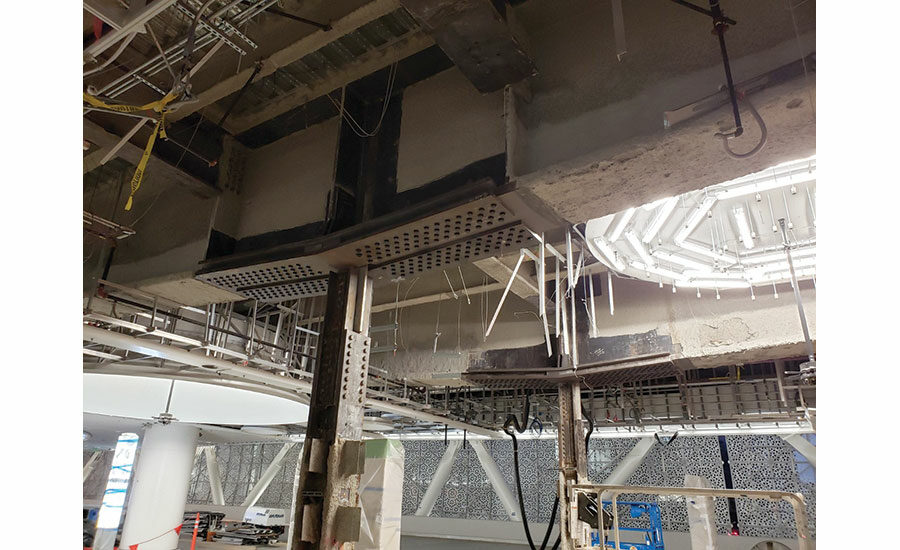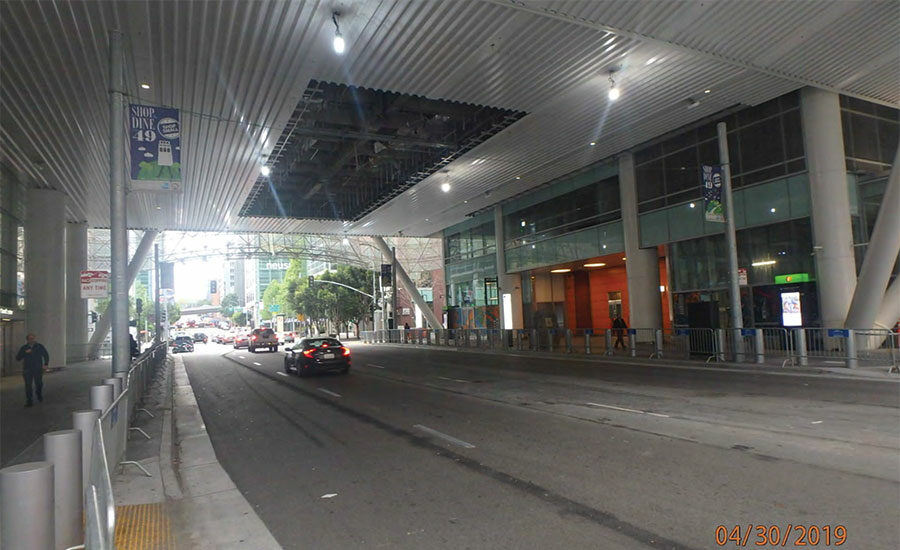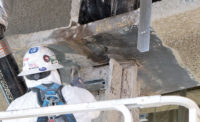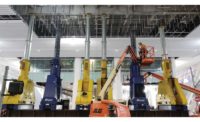Salesforce Transit Center Reopening Still Not Set

Workers are done installing the double splints that reinforce the bottom flanges of the twin girders spanning Fremont and First streets, whether or not they fractured.
PHOTO BOTTOM COURTESY OF TJPA

With shoring gone, all lanes of traffic are open during the day on Fremont and First streets.
PHOTO BOTTOM COURTESY OF TJPA


The independent panel reviewing the investigation of San Francisco’s troubled Salesforce Transit Center is tasked with both determining the cause of brittle fractures in two bottom flanges of twin built-up plate girders and assigning responsibility for the fractures, according to Ron Alameida, director of design and construction for the public owner, the Transbay Joint Powers Authority.
At a May 8 meeting of the Alameda-Contra Costa Transit District board, TJPA’s Alameida said, “The letter from the mayors [of San Francisco and Oakland] charged the peer review panel with identifying the cause and who might be responsible.”
In disagreement, Michael D. Engelhardt, chairman of the peer review panel assembled by the area’s Metropolitan Transportation Commission (MTC), says the panel’s scope “does not include addressing issues of what parties may be responsible for the fractures.”
The scope, which does include determining the cause, was laid out in a Nov. 7, 2019, letter from Steve Heminger, MTC’s executive director, to the two mayors. The panel’s work also involved reviews of the load capacity of the girders’ temporary shoring, the fractured materials’ sampling and testing plan, the condition of the structural elements affected by the fractures and the repair solution.
Though it will not point fingers, the panel will “prepare recommendations on issues that should be considered by the profession to help avoid this type of failure in the future,” says Engelhardt, a University of Texas at Austin professor of engineering.
TJPA closed its 4.5-block-long transit center late last September, some six weeks after it had opened to bus traffic, after the discovery of the fractures in tapered plate girders that span 87 ft, much like bridges, over Fremont Street. The third-level girders support a rooftop park above and, through a hanger plate that thickens the web’s midspan, a second-level bus deck.
The 1.2-million-sq-ft transit center, designed by Pelli Clarke Pelli Architects with executive architect Adamson Associates and engineer-of-record Thornton Tomasetti Inc. (TT), was built by the Webcor/Obayashi Joint Venture.
Skanska USA Civil West is the steel subcontractor and Herrick Corp. fabricated the girders.
The repair of the Fremont girders and the reinforcement of similar twin girders spanning First Street, which did not fracture, are complete and the building is “fully serviceable,” said Alameida.
But TJPA has not announced a reopening date. Quality control and quality assurance documentation is ongoing, said Alameida.
Retesting and reinspecting life safety systems and retesting mechanical and electrical systems are mostly done.
Engelhardt says it is not clear when the panel’s work, which needs to be completed before the facility reopens, will be done. May 22-23 meetings in New York City with TT, forensic engineer LPI, TJPA and others should provide a “clearer picture of the schedule,” he says.
This month, crews are removing sprayed-on fire resistance from the building’s steel structure along gridlines 9 and 11. This will provide “a good sampling of work product” from the project’s other steel fabricators, said Alameida, at the AC Transit District meeting. AC Transit will operate the facility.
There are three lawsuits about the transit center project filed in the Superior Court of the State of California, County of San Francisco (ENR 4/15 p. 8). The court consolidated them into one suit.
There is no trial date set. “We are continuing to negotiate with the TJPA,” says John Bowles, Webcor’s executive vice president.
With girder shoring removed, all traffic lanes on Fremont and First streets are open during the day. Night street closures will continue through the month to restore lights and MUNI rapid transit overhead lines and to reinstall ceiling panels.








